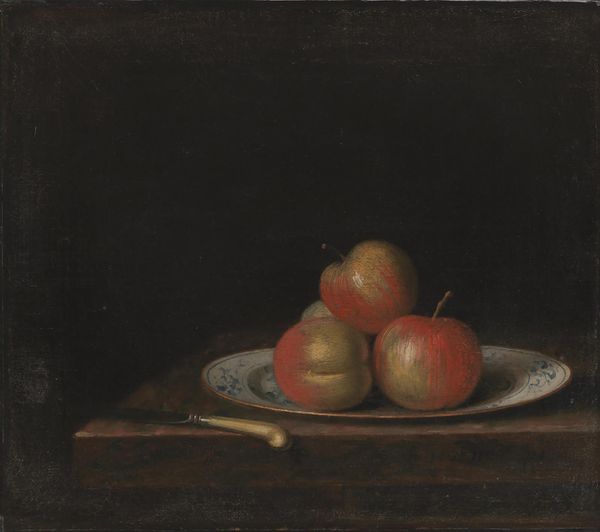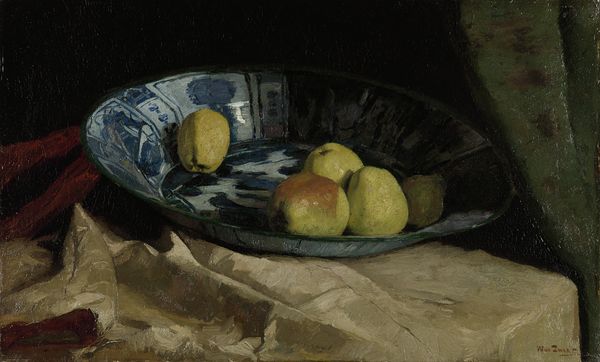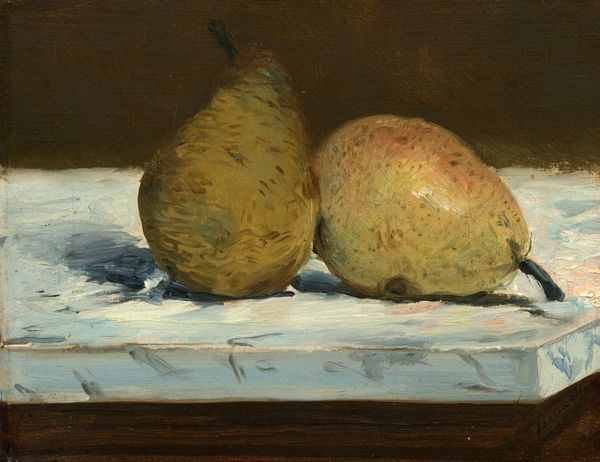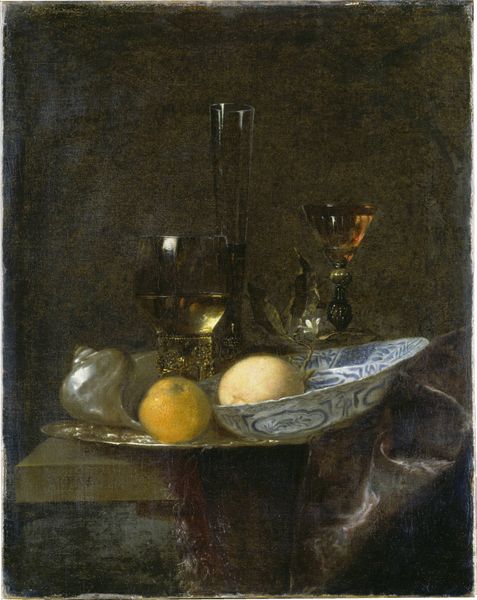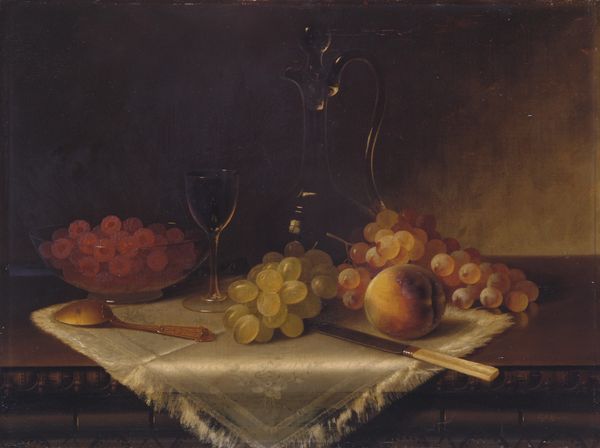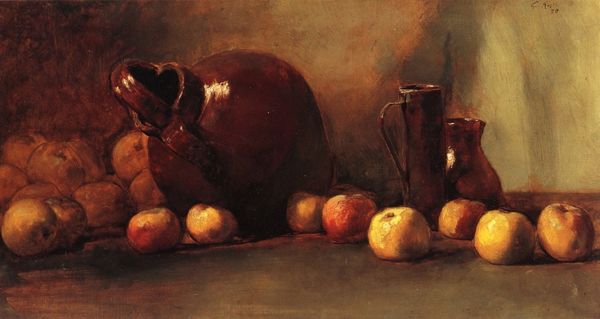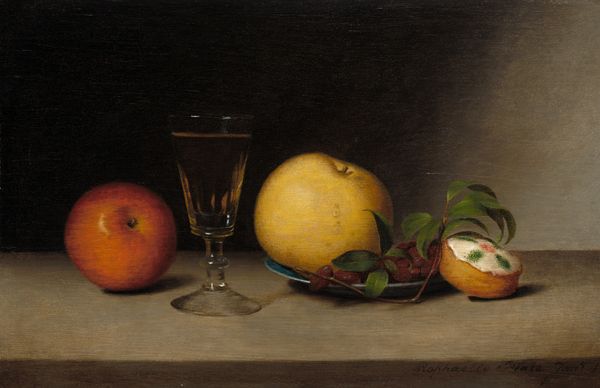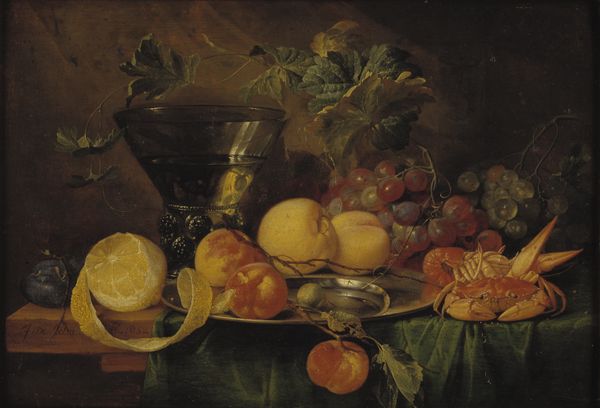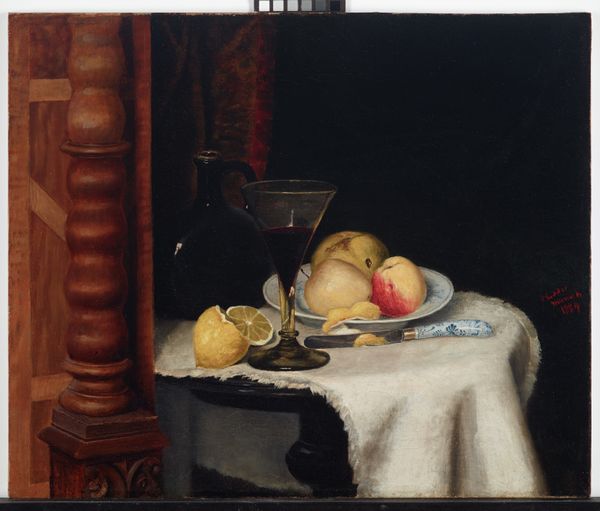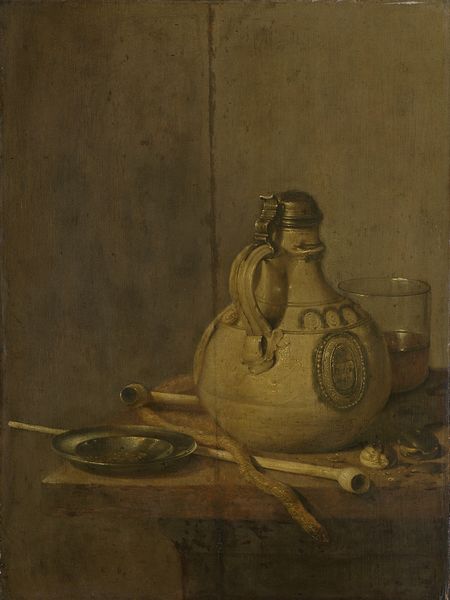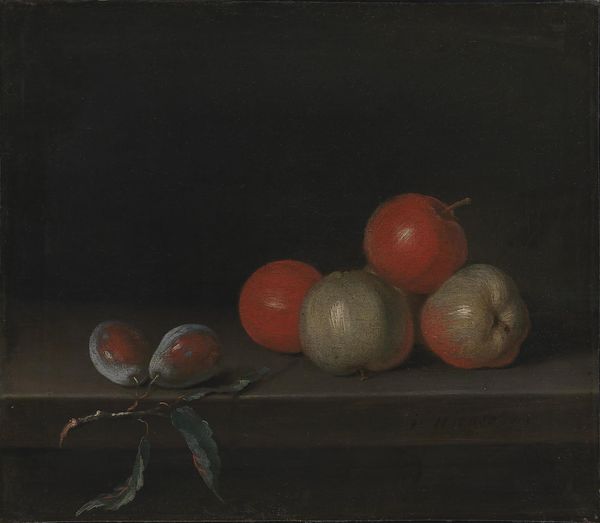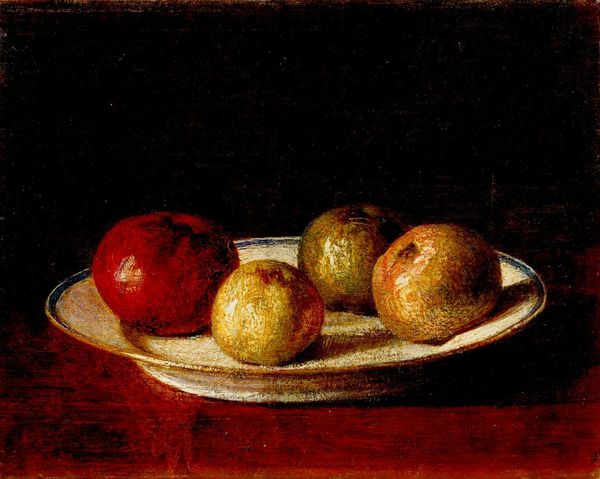
painting, oil-paint, oil, canvas
#
painting
#
oil-paint
#
oil
#
oil painting
#
canvas
#
realism
Dimensions: 24.6 x 35.2 cm
Copyright: Public Domain
Ottilie W. Roederstein's painting of "Still Life with Pears and Casserole" captures a quiet moment, painted sometime in the late 19th century. The muted palette suggests a kind of subdued observation, where the act of seeing becomes a process of careful translation. Look at how the paint is applied, thinly and evenly, allowing the textures of the pears and the metal of the casserole to emerge gently. It’s as if Roederstein is interested in the essence of these objects, their weight and form, rather than a flashy display of technique. The brushstrokes are almost invisible, creating a smooth surface that invites a closer look. Notice how the light catches the side of the casserole, creating a subtle gradient from warm gold to cool shadow. That small detail alone is a masterclass in observation. This piece reminds me a bit of Chardin, in how it elevates the ordinary to something profound. It’s not just about pears and pans; it’s about the quiet beauty of everyday life.
Comments
stadelmuseum about 2 years ago
⋮
Two pears and a casserole in front of a dark background in various shades of brown – Ottilie W. Roederstein’s main focus was on the objects’ different textures: on the matt green and the small dents in the pear skins as well as on the copper pot’s shimmering light surface reflections. After portraits, still lifes were the second most important genre in Roederstein’s work. In this way, she ostensibly conformed to the ideas of 19th century art world, which confined women artists to these two less prestigious genres. Roederstein, however, devoted herself to still lifes relatively late in life, towards the peak of her career. This small composition in the Städel Museum collection, painted in 1903, is one of the earliest surviving examples. With it, Roederstein invokes 18th century French and Dutch still lifes – including those by French painter Jean-Siméon Chardin, who was then very well-known and whom she greatly admired. With her work, she draws on this tradition.
Join the conversation
Join millions of artists and users on Artera today and experience the ultimate creative platform.
